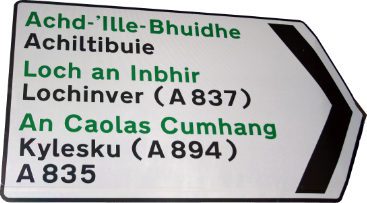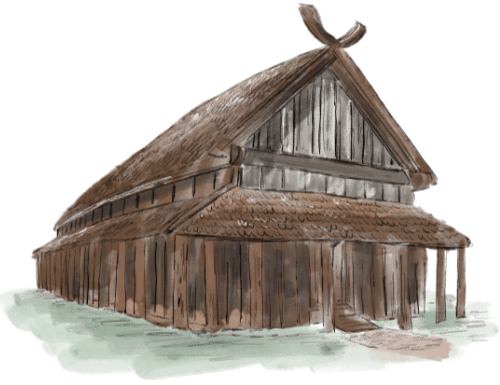The Vikings
As the Gaelic name explains, the Vikings were a group of people from the Scandinavian (Lochlannach) countries (Norway, Denmark and Sweden). Many of the Vikings left their home regions to set up trade and agriculture, to fight and to loot, and to see new lands.
They sailed to and conquered regions all around the North Atlantic Ocean.
Historical evidence tells us that there were Viking settlements where the countries of Canada, Iceland, Iraq and Russia are today, as well as in countries which were nearer to them.


They influenced many regions with their language, culture and lifestyle.
They had their own religion and beliefs and they were among the best sailors in the world, with their big boats which carried them many miles across the sea.




The Vikings were at their strongest between the end of the 8th and the middle of the 11th century. There are accounts of Vikings coming from Norway to Scotland and Ireland.
The first Viking attack which was recorded was on the small island of Lindisfarne, off the north-east coast of England.

There was a Christian monastery on the island and it was looted by the Vikings in the year 793. The building was destroyed and the monks were killed. Some of the most precious items belonging to the Christian church were on that island.
Just two years after the attacks on the Island of Lindisfarne, attacks were made on an island with a monastery where there was a Christian community. The Vikings attacked that island six times in the years 795, 802 and 805.
Iona was very important since it was there that St Columba established a monastery and a Christian community in the year 563.
Iona wasn’t the only place the Vikings attacked.
They invaded the Western Isles, Orkney and Shetland and parts of mainland Scotland too.

Get this resource!
The Viking Chest
This resource was created so that pupils can learn about the Vikings in a stimulating way. Each chest is full of a variety of Norse replicas. As we have a restricted number, each chest will be available for loan on a school term basis.
(or phone the Stòrlann office on 01851 700880)
Norse Placenames in Scotland
The Vikings who settled in the lands they attacked influenced the language and culture of these places.
There were Gaels and Picts in Scotland before the Vikings came in the 9th century and they had placenames in the languages they spoke at that time.


When the Vikings, who spoke Norse, came and set up communities in the Scottish islands and in the north of the country, they had a big influence on the language.
Examples can be found all over Scotland of placenames with Norse roots.
In the northern isles, Orkney and Shetland, most of the placenames we are familiar with today come from the Norse language.
That is because these islands were under the control of the Vikings for many centuries, and there were many Viking settlements there.
As you would expect, since the Vikings travelled a lot by sea, many of the Norse words which have come into Gaelic are connected to the sea.
The two words ‘sgeir’ (a rock in the sea) and ‘geodha’ (a narrow inlet with steep cliffs on each side) are found frequently in names all over the Highlands and islands, and they come straight from the old language of the Vikings.
‘Sker’ and ‘gjá’ are the Norse words for these landscape features.
‘Sgeir’ and ‘geodha’ are examples of Norse words which have a Gaelic form.
There are lots of other placenames which are now thought of as Gaelic names, but there is no doubt that they have Norse roots.



